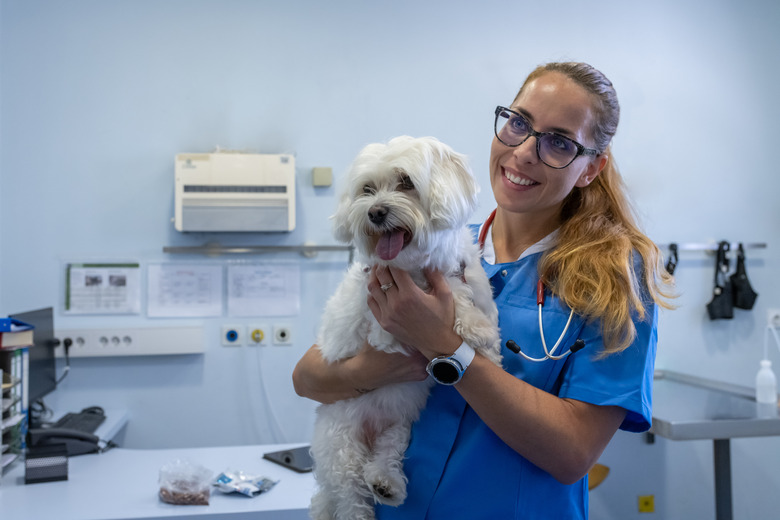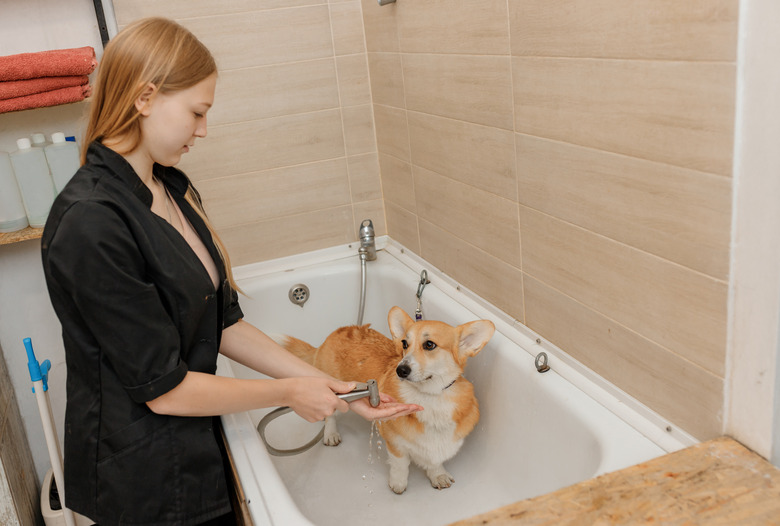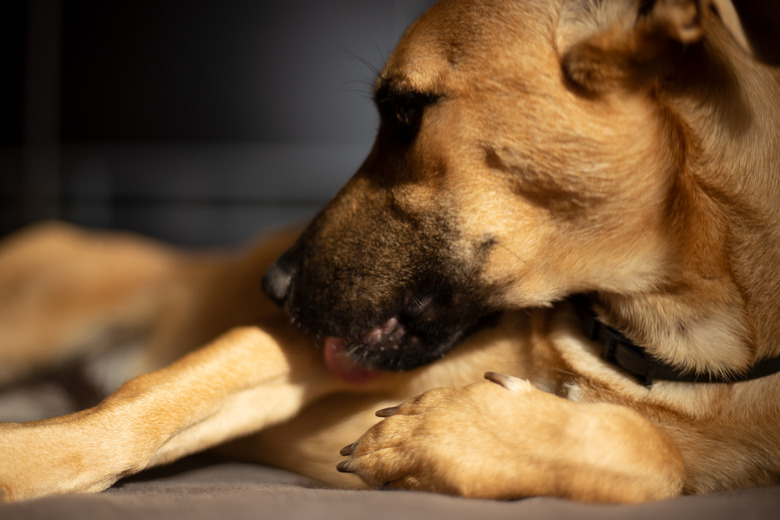How To Remove Pet Stitches?
Removing stitches from your pet after a common surgery, like a spay or neuter, is generally an easy process. Unless there's a lot of scabbing or the stitches are tight, it's usually not much harder than snipping the thread with scissors and gently pulling it out (assuming the stitches are not dissolvable). However, you should be sure that your pet's wound is fully healed and that you have approval from your veterinarian to remove the stitches yourself.
Pet stitches removal from the surgical site
Pet
stitches removal from the surgical site
Sometimes, people want to remove stitches themselves if there is a cost for removing the pet's stitches. However, at most veterinary hospitals, there is usually no charge for suture removal if you go back to where your dog or cat had the surgery, and you go back when the veterinarian recommended.
Suture removal generally requires a final visit to the veterinarian to be sure the wound or surgical site has healed. If you do it yourself, you might be able to avoid the hassle of a trip to the animal hospital. But it is important that you snip the stitches at the right time and in a way that doesn't cause your dog or cat any further harm.
In most cases, there is no charge for removing stitches, so allowing a professional to do it is preferable. For instance, you'll likely schedule a no-charge follow-up appointment with a technician at your regular veterinarian's office unless your pet had major surgery or orthopedic surgery, such as the removal of a very large tumor. Then, you'll likely have a recheck with a doctor or make an additional appointment with a specialist, depending on the type of surgery.
Timing of pet stitches removal
Timing of pet stitches removal
In most cases, pet stitches are generally only left in for 10 to 14 days, but it depends on the extent of the injury. For instance, if your pet had surgery to remove a mast cell tumor, the stitches will likely be left in longer because those types of surgical incisions can open back up easily. Do not attempt to remove the stitches if the skin has not sufficiently grown together or if there is any seepage or signs of infection, such as oozing pus, a foul odor, a thin red line running in any direction from the site, or excessive redness or swelling.
If your pet's surgical wound opened after the stitches were removed, get it checked out. It could mean that an infection has developed or that the stitches were removed too soon.
Should you bathe a pet after sutures are removed?
Should you bathe a pet after sutures are removed?
Do not give your pet a bath after stitches are removed. You do not want your cat or dog's incision to get wet. You also don't want to put anything on the stitches, such as cream, unless you are instructed to do so by your care provider. Cleaning with hydrogen peroxide or alcohol is not recommended because these can be drying, making the skin itchy.
If your pet is scratching, licking the wound, or pulling at the stitches, it can delay healing. Do not allow them to lick or scratch the incision because there is a danger that they will pull out the stitches or introduce an infection to the incision.
Steps for removing a pet's stitches
Steps for removing a pet's stitches
If you want to try removing stitches at home, there's a good way to approach it. Find a time when your pet is calm. They will need to be held still, so don't approach them when they are feeling active. Perhaps use a muzzle to keep a dog from barking or biting or wrap a towel around your cat and ask someone to help hold them still.
Hold your pet firmly under one arm with the head secured like a football or if you have a large dog, lay them on their side and hold them down across their upper torso and neck. Hold their back legs if they continue to struggle. Slip the scissors under one of the sutures and gently but firmly cut the stitch quickly. Repeat this step with the remaining sutures.
If needed, give your pet a break before going back for the other stitches. Pull the end of the suture where the knot is located. The suture should slip out of the skin. If not, use tweezers to pull it out.
Cleaning your pet's wound after stitches removal
Cleaning your pet's wound after stitches removal
Ensuring your dog's wound is completely healed and closed, clean any dried blood or dirt away from the incision site using a cotton ball dipped in normal saline solution or warm water. Check the incision daily for the next two to three days to make sure your pet has not irritated it by licking or chewing. The healing process takes time, and your pet might have to wear an Elizabethan collar, also called an e-collar. Always follow your veterinarian's post-op care instructions.
The bottom line
The bottom line
It is possible for dog owners to remove a cat or dog's stitches if the surgical wound has thoroughly healed and you have your veterinarian's approval. If you must remove your pet's nondissolvable stitches yourself, keep your pet from moving by holding them tightly. Then, using scissors, snip the stitch quickly but carefully. It should pull out easily — if not, use tweezers. Your veterinarian will let you know if any aftercare is needed.


